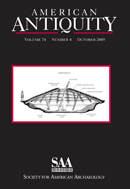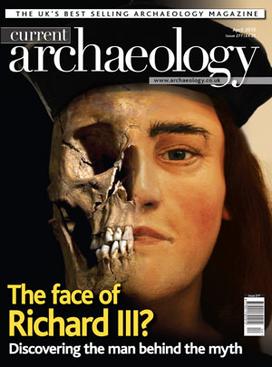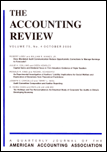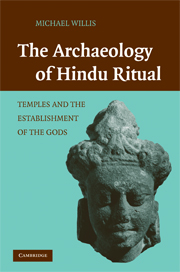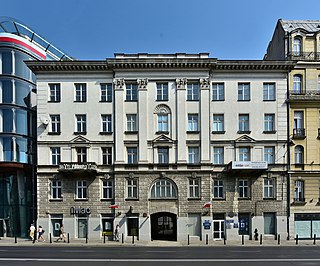| Number | Title | Theme Editor(s) | Date |
|---|
| 38.1 | Archaeology and Colonialism | Marianna Negro, Julia Gustafson and Gian Battista Marras | May 2023 |
| 37.2 | Aesthetics, Sensory Skills and Archaeology | Polina Kapsali and Rachel Phillips | November 2022 |
| 37.1 | Rethinking the Archaeology-Heritage Divide | Alisa Santikarn, Elifgül Doǧan, Oliver Antczak, Kim Eileen Ruf and Mariana P.L. Pereira | May 2022 |
| 36.2 | Text & Image | Elisa Scholz and Glynnis Maynard | November 2021 |
| 36.1 | Resilience & Archaeology | Sergio G. Russo and Leah M. Brainerd | May 2021 |
| 35.2 | Knowledge-scapes | Julia Montes-Landa, Friederike Jürcke and Alessandro Ceccarelli | November 2020 |
| 35.1 | The Chaîne Opératoire: Past, Present, and Future | Michael Lewis and Monique Arntz | September 2020 |
| 34.2 | Beyond the Human: Applying Posthumanist Thinking to Archaeology | Mark Haughton and David K. Kay | December 2019 |
| 34.1 | Desert Archaeology | Camila Alday and Sarah Morrisset | April 2019 |
| 33.2 | The Others: Deviants, Outcasts and Outsiders in Archaeology | Leah Damman and Sam Leggett | November 2018 |
| 33.1 | Glocal Archaeology | Lindsey J. Fine and Jess E. Thompson | April 2018 |
| 32.2 | On the Edge of the Anthropocene? Modern Climate Change and the Practice of Archaeology | J. Eva Meharry, Rebecca Haboucha and Margaret Comer | November 2017 |
| 32.1 | In Sickness and In Health | Eóin W. Parkinson and Lynette Talbot | July 2017 |
| 31.2 | Landscapes | Ian Ostericher | November 2016 |
| 31.1 | In the Trenches | Meghan E. Strong | April 2016 |
| 30.2 | Archaeology: Myths Within and Without | Benjamin Hinson and Barbora Janulíková | November 2015 |
| 30.1 | Seen and Unseen Spaces | Matthew Dalton, Georgie Peters and Ana Tavares | April 2015 |
| 29.2 | The Archive Issue | Renate Fellinger and Leanne Philpot | November 2014 |
| 29.1 | Social Network Perspectives in Archaeology | Sarah Evans and Kathrin Felder | April 2014 |
| 28.2 | Humans and Animals | Kate Boulden and Sarah Musselwhite | November 2013 |
| 28.1 | Archaeology and Cultural Mixture | W. Paul van Pelt | April 2013 |
| 27.2 | Archaeology and the (De)Construction of National and Supra-National Polities | Russell Ó Ríagáin and Cătălin Nicolae Popa | November 2012 |
| 27.1 | Science and the Material Record | Katie Hall and Danika Parikh | April 2012 |
| 26.2 | Collaborative Archaeology | Dominic Walker | November 2011 |
| 26.1 | Archaeology and Economic Crises | Rosalind Wallduck and Suzanne E. Pilaar Birch | April 2011 |
| 25.2 | Boundaries and Archaeology | Mark Sapwell and Victoria Pia Spry-Marqués | November 2010 |
| 25.1 | Violence and Conflict in the Material Record | Skylar Neil and Belinda Crerar | April 2010 |
| 24.2 | Beyond Determinism? Engagement and Response in Human Environment Interactions | Robyn H. Inglis and Alexander J.E. Pryor | November 2009 |
| 24.1 | Invention and Reinvention: Perceptions and Archaeological Practice | Tera C. Pruitt and Donna Yates | April 2009 |
| 23.2 | Movement, Mobility and Migration | Emma Lightfoot | November 2008 |
| 23.1 | Archaeological Histories: 25th Anniversary Edition | Monique Boddington and Naomi Farrington | April 2008 |
| 22.2 | The Disturbing Past | James Holloway and Alison Klevnas | November 2007 |
| 22.1 | The Materiality of Burial Practices | Alice Stevenson and Natalie C.C. White | April 2007 |
| 21.2 | Embodied Identities | Isabelle Vella Gregory | November 2006 |
| 21.1 | Technologies: Changing Matter; Changing Minds? | Brad Gravina | April 2006 |
| 20.2 | Issues of Food and Drink: An Interdisciplinary Approach | Sarah Ralph | November 2005 |
| 20.1 | Active Landscapes: Paleolithic to Present | Mary Chester-Kadwell | April 2005 |
| 19.2 | Reconsidering Ethnicity: Material Culture and Identity in the Past | Susanne E. Hakenbeck and Steven G. Matthews | November 2004 |
| 19.1 | Art and Archaeology: Unmasking Material Culture | David A. Barrowclough | April 2004 |
| 18 | Medieval Animals | Aleks Pluskowski | June 2002 |
| 17.2 | Early Medieval Religion | Aleks Pluskowski | 2001 |
| 17.1 | New Approaches to the Palaeolithic and Mesolithic | Chantal Conneller | April 2000 |
| 16.1 & 16.2 | Contending with Bones | Nicky Milner, Dorian Q Fuller and Mary Baxter | November 2003 |
| 15.2 | Disability and Archaeology | Nyree Finlay | 1999 |
| 15.1 | The Archaeology of Perception and the Senses | Carleton Jones and Chris Hayden | 1998 |
| 14.2 | An Archaeological Assortment | Nicky Milner and Dorian Q Fuller | 1997 (for 1995) |
| 14.1 | History and Archaeology | Mads Ravn and Rupert Britton | 1997 (for 1995) |
| 13.2 | Perspectives on Children and Childhood | Jo Sofaer Derevenski | Winter 1994 |
| 13.1 | Archaeology Out of Africa | Rachel MacLean and Timothy Insoll | Spring 1994 |
| 12.2 | The Hierarchy of Being Human | Mark Lake and Paul Pettitt | Autumn 1993 |
| 12.1 | General Perspectives | | Spring 1993 |
| 11.2 | Digging for a Laugh | Bill Sillar | Autumn 1992 |
| 11.1 | In the Midst of Life | Sarah Tarlow and Brian Boyd | Summer 1992 |
| 10.2 | Archaeology in Context | Jonathan Last | Winter 1991 |
| 10.1 | Interpreting Archaeological Science | Kathryn Roberts and Kevin C. MacDonald | Spring 1991 |
| 9.2 | Affective Archaeology | John Carman and Jeremy Meredith | Winter 1990 |
| 9.1 | Technology in the Humanities | Anthony Sinclair and Nathan Schlanger | Summer 1990 |
| 8.2 | Writing Archaeology | Anthony Sinclair | Winter 1989 |
| 8.1 | Dangerous Liaisons? Archaeology in East and West | Simon Kaner and Sarah Taylor | Spring 1989 |
| 7.2 | Archaeology and the Heritage Industry | Frederick Baker | Autumn 1998 |
| 7.1 | Women in Archaeology | Karen Arnold, Roberta Gilchrist, Pam Graves and Sarah Taylor | Spring 1988 |
| 6.2 | Archaeology as Education | Nigel Holman and Fiona Burtt | Autumn 1987 |
| 6.1 | Time and Archaeology | Patricia Curry and Olivier de Montmollin | Spring 1987 |
| 5.2 | Creating Space | Robin Boast and Eugenia Yiannouli | Autumn 1986 |
| 5.1 | Archaeology and Politics | Ajay Pratap and Nandini Rao | Spring 1986 |
| 4.2 | Aesthetics and Style | James Whitley | Autumn 1985 |
| 4.1 | Surface Archaeology | Paul Lane | Spring 1985 |
| 3.2 | Archaeology and Texts | John Bennet | Autumn 1984 |
| 3.1 | The History of Archaeology | James B. McVicar | Spring 1984 |
| 2.2 | Ethnoarchaeology | Todd Whitelaw | Spring 1983 |
| 2.1 | Archaeology and the Public | Robert Bewley | Spring 1983 |
| 1.2 | General Issue | Sheena Crawford and Henrietta L. Moore | Summer 1981 |
| 1.1 | Founding Issue | Sheena Crawford and Henrietta L. Moore | Summer 1981 |



